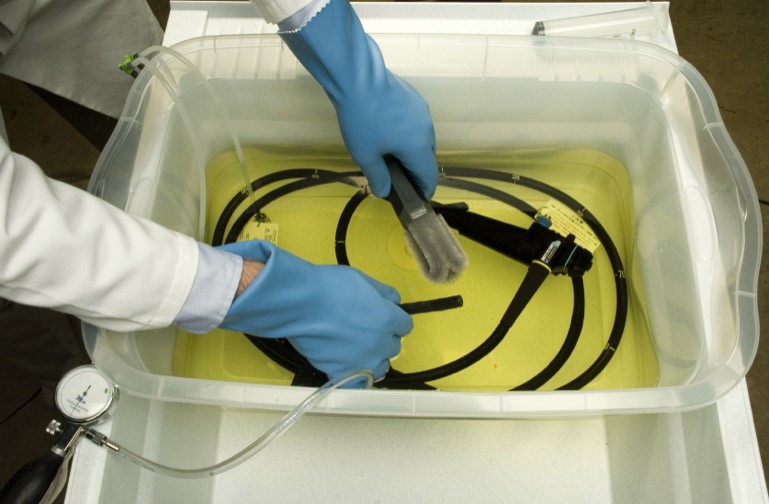The importance of sterility
Sterilisation of surgical instruments began in the 1880s, as the risk of cross-infections became apparent. This initially involved simply boiling the instruments. In time a range of other techniques developed and operationally the process became more sophisticated to ensure sterility was complete and objectively proven to be complete.
There are a number of routes via which patients can become infected during an endoscopy procedure, these are patient to patient, environment to patient, and from organisms within the patient’s body. And there are a number of reports which record infections being transmitted via all of these routes (Spach et al, 1993; Debongnie and Bouckaert, 1993; Medical Devices Agency, 1996). It is therefore imperative that reusable scopes are cleaned effectively.
What does the endoscope cleaning process look like?

Endoscopes are made of a range of complex materials including plastics. They contain electrically driven devices such as cameras, and a number of potentially contaminated small diameter tubes often over two metres long. These factors make it impossible to sterilise these devices in a practical way. Sterilising with a chemical such as Ethylene Oxide takes a week.
In consequence, a system of high level disinfection has been developed. This requires thorough mechanical cleaning of the endoscope and its internal channels with brushes, cleaning fluids and enzymic chemicals. The endoscope is then immersed for about twenty minutes in an inorganic oxidating chemical in a cleaning machine. Finally, filtered air is used to completely dry the endoscope internally. All of the machines required to complete this process, along with the water supply are all tested regularly for contamination.
What are the issues with cleaning endoscopes?
The endoscope cleaning process carries two risks:
- All infection is not eliminated;
- The process itself damages the endoscopes.
Unfortunately, there is evidence that both of the above outcomes occur.
In spite of the robust efforts that are involved in the cleaning process, there is evidence of cross contamination of endoscopes, and of patient infections brought about by cross-infection from an endoscope. It is also estimated that about 10% of procedures are cancelled due to equipment failures, some of which are caused by the cleaning process.
So, what is the alternative to cleaning endoscopes?
The main alternative to disinfection is of course single use devices. This has become much more widespread with the advent of new materials, such as complex plastics, which allow for the manufacture of devices both cheaply and in large volumes. These single use devices are sterilised at the point of manufacture in designated cleanrooms, using methods which ensure lasting sterility within sealed packaging.
In support of the adoption of this new technology and approach to endoscopy, agencies such as the U.S. FDA have advised that to eliminate infection risks the real solution has to be a shift towards single use, pre-sterilised endoscopes.
This is a solution that IQ Endoscopes is determined to make possible.
Please feel free to contact us if you wish to learn more about the developments we are making in this field.
